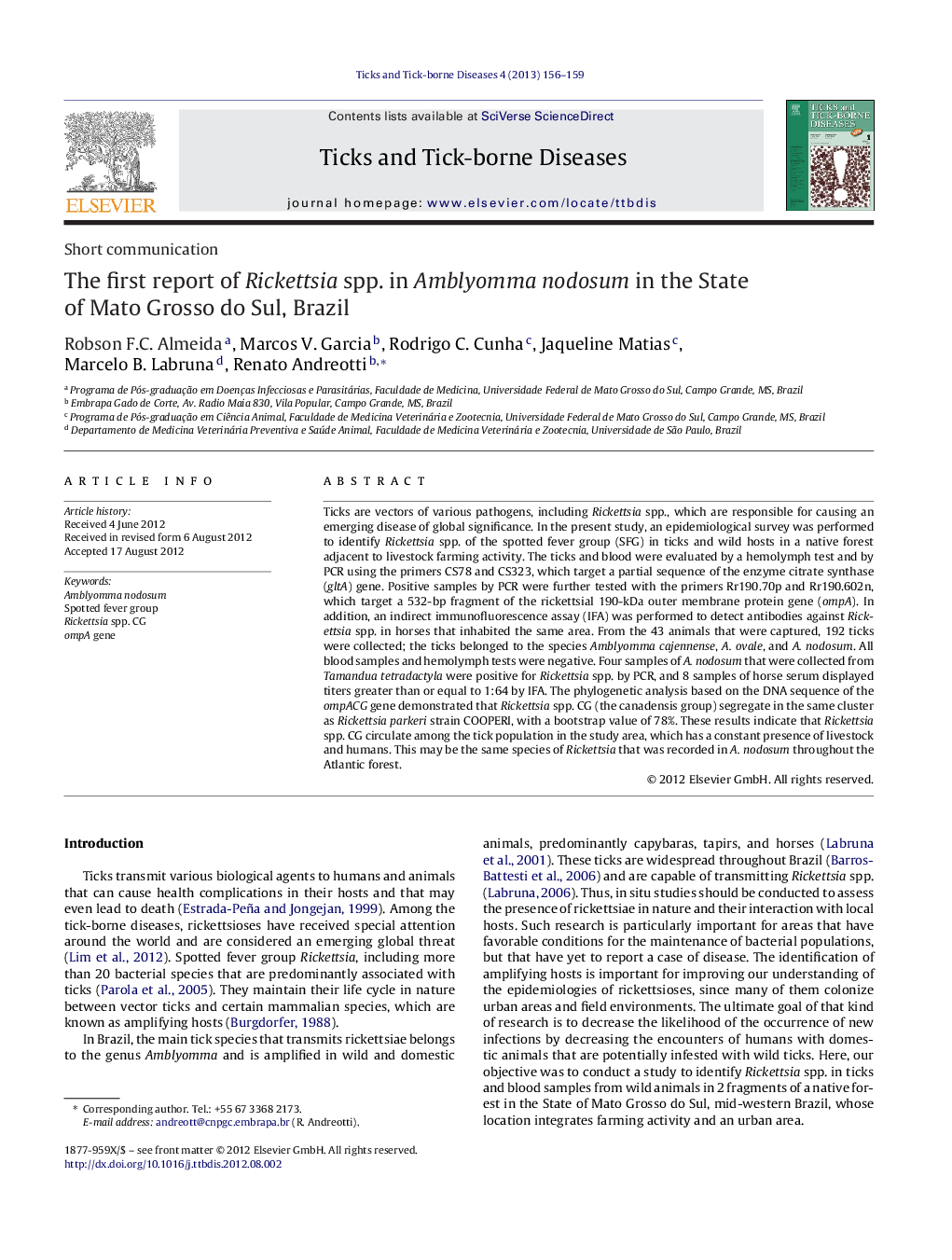| Article ID | Journal | Published Year | Pages | File Type |
|---|---|---|---|---|
| 2474246 | Ticks and Tick-borne Diseases | 2013 | 4 Pages |
Ticks are vectors of various pathogens, including Rickettsia spp., which are responsible for causing an emerging disease of global significance. In the present study, an epidemiological survey was performed to identify Rickettsia spp. of the spotted fever group (SFG) in ticks and wild hosts in a native forest adjacent to livestock farming activity. The ticks and blood were evaluated by a hemolymph test and by PCR using the primers CS78 and CS323, which target a partial sequence of the enzyme citrate synthase (gltA) gene. Positive samples by PCR were further tested with the primers Rr190.70p and Rr190.602n, which target a 532-bp fragment of the rickettsial 190-kDa outer membrane protein gene (ompA). In addition, an indirect immunofluorescence assay (IFA) was performed to detect antibodies against Rickettsia spp. in horses that inhabited the same area. From the 43 animals that were captured, 192 ticks were collected; the ticks belonged to the species Amblyomma cajennense, A. ovale, and A. nodosum. All blood samples and hemolymph tests were negative. Four samples of A. nodosum that were collected from Tamandua tetradactyla were positive for Rickettsia spp. by PCR, and 8 samples of horse serum displayed titers greater than or equal to 1:64 by IFA. The phylogenetic analysis based on the DNA sequence of the ompACG gene demonstrated that Rickettsia spp. CG (the canadensis group) segregate in the same cluster as Rickettsia parkeri strain COOPERI, with a bootstrap value of 78%. These results indicate that Rickettsia spp. CG circulate among the tick population in the study area, which has a constant presence of livestock and humans. This may be the same species of Rickettsia that was recorded in A. nodosum throughout the Atlantic forest.
